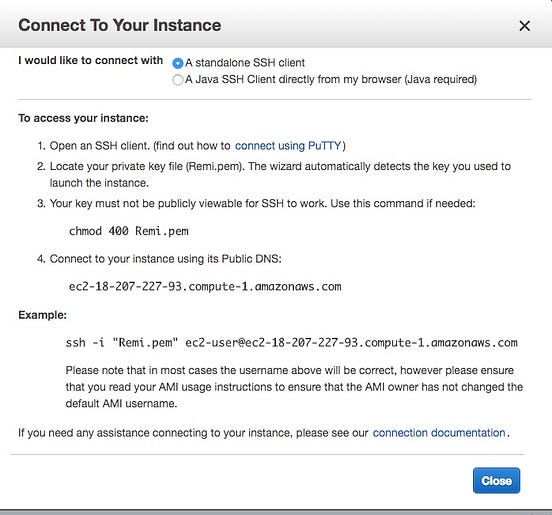
- #Untar to directory how to#
- #Untar to directory install#
- #Untar to directory archive#
- #Untar to directory rar#
- #Untar to directory download#
#Untar to directory archive#
The above will archive the entire folder foldername in an archive named in the current working directory. So I think if you compress the file with a absolute path then extract it use the -C / to specify dir it would be exactly as the same path as the orinal dir. tar -zcvf jdk64.gz /usr/jdk64/jdk/ pwd /root ls -1 grep -Ei jdk jdk64.gz. An example of creating such a file is: tar -zcf foldername/ If you have taken the tar backup without the first '/' you can extract it to any other directory, - What is the output of tar -tvf test. Let me show an example of compressing and extracting to the original dir and files using tar. Examples collapse all Extract Tar File to New Folder Create a tar file, and then extract it to the folder backup. You can use this syntax with any of the input argument combinations in the previous syntaxes. The most commonly used however is the tar.gz format. filenames untar ( ) returns a cell array of character vectors containing the names of the extracted files.
#Untar to directory rar#
To extract a Rar file, you can use: rar x archive.rarĮach archive type has its own mechanism to create a new archive file. To extract a Tar.Gz file, you can use: tar -zxvf
#Untar to directory download#
(Also, on many systems, when you download the tar.gz from a web browser, an unpacker will open. To extract a Tar file, you can use: tar -xvf archive.tar The result will be a new directory containing the files. This command is used for 2 specific utilities in file operations. But we can also specify another directory to untar a tar archive. Untar is defined as a command which enables users to extract files that are compressed with tar, tar.gz, tar.bz2 formats of compression. Contribute to lshiwjx/resnet3d-pytorch development by creating an account on GitHub. To extract an archive to a directory different from the current, use the -C, or -directory, tar option, as in tar -xf archive.tar -C /target/directory. Untar To Specified Path or Folder The untar operation extract files to the current working directory by default.
#Untar to directory how to#
To extract a ZIP file, you can use: unzip archive.zip 1 In this tutorial, we will see how to deal with a new type of task using the middle layer of the fastai library The fastai library is the most popular library for adding this higher-level functionality on top of PyTorch path untardata (URLs path untardata (URLs.

zip), tar (.tar), Tar+Gunzip (.tar.gz), Bzip (.bz2) and Rar (.rar).Įach archive type has its own command for compressing/extracting as listed below. The most common archive types are zip (ending with. The very first step in the process would be to identify the exact archive type by looking at the file extension.
#Untar to directory install#
What do you think? Is there an even better way? Need to print shipping labels on your site?Ĭheckout my product RocketShipIt for simple easy-to-use developer tools for UPS™ FedEx™ USPS™ and more.Sometimes you would need to extract or create an archive file, i.e to install a script, you would usually download an archive and extract it to continue the installation. This will list contents of the file ‘ ZendFramework-1.7.2.tar.gz’ showing only the first few lines. Tar -tf ZendFramework-1.7.2.tar.gz | head The only thing now is… How do I tell if a tar contains a “container folder”? you will need to pass the -a option to unzip in order to extract them with. Tar -xvf ZendFramework-1.7.2.tar.gz -strip 1 First, ensure that you have a shell running and cd to the same directory as. This will strip off the first directory and extract the rest. The flag that I have learned is the strip flag. Now I have found a better way… A better way For a basic compression of a folder named, for example, LotsOfFiles, you could enter.

This is how I used to extract the contents and remove the “container folder”:Ĭopy everything in the “container” folder and move it up a directory. This is great but sometimes I want to extract the contents of the folder without the “container folder”. See also Open or quit Terminal on Mac Open new.

In the Finder on your Mac, double-click the tar file. To see progress messages, also use the v flag. move the file to the correct directory and cd to that directory.
All the other files are contained under this folder. To uncompress a tar archive on your Mac, do one of the following: In the Terminal app on your Mac, enter the tar command with the x flag, then press Return. Very simply, if you want to create a single tar file on a linux host consisting of multiple directories, you could use the following command: tar czfPA “container directory” is a directory that contains all the other files usually with the same name as the compressed file.įor example the Zend Framework when downloaded contains a folder called, ‘ ZendFramework-1.7.2’. tar.gz it is always a crapshot whether or not it contains a “container directory”. Whenever I download something that is compressed on the Internet in a. Extract without First Directory Written by Mark Sanborn: Jan 6, 2009


 0 kommentar(er)
0 kommentar(er)
